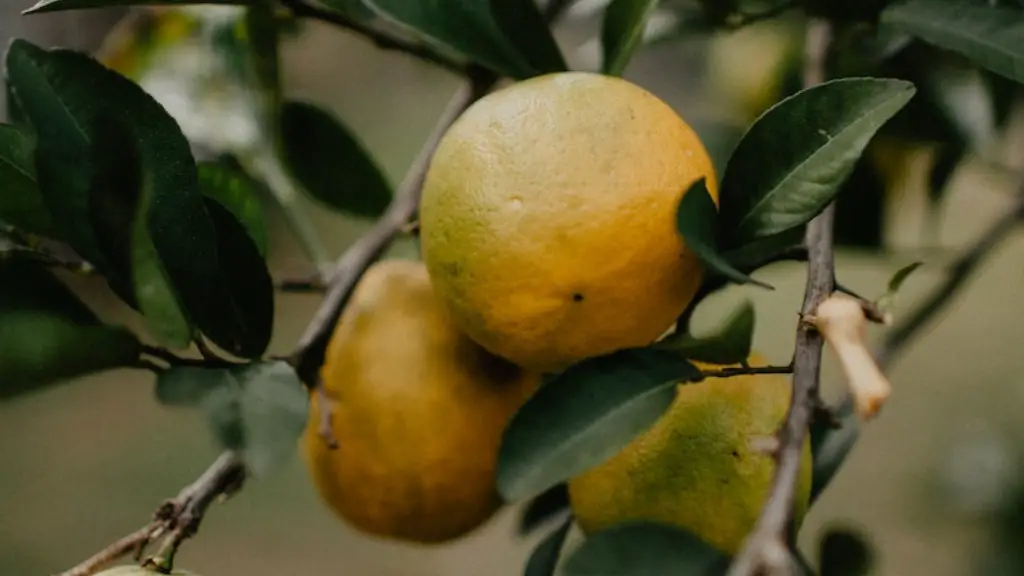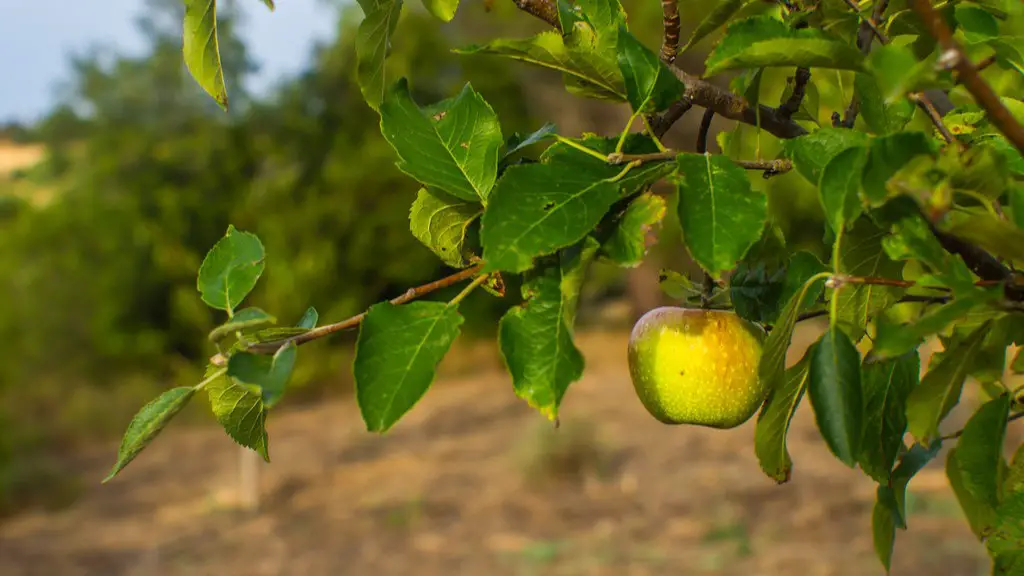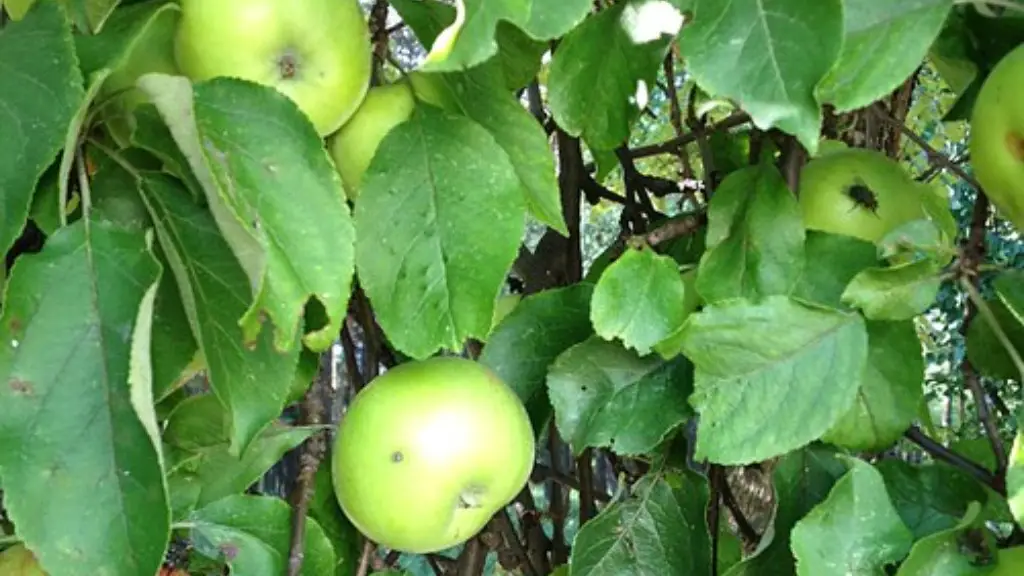Saving lemon trees from root rot is a challenging problem that affects many gardeners. The best way to start is by understanding what causes root rot. Generally speaking, root rot is the result of fungal or bacterial infections. It occurs when these infections enter the root system of a tree through weakened areas in the soil. It is important to note that there can also be physiological causes of root rot, such as inadequate fertilization, poor drainage, and overwatering.
To save a lemon tree from root rot, gardeners need to be proactive with proper care. The first step is to improve soil drainage. Root rot is exacerbated in moist and soggy soils, so it is important to make sure the soil is well-draining. Adding organic compost, humus, perlite, and other soil amendments are beneficial in improving soil drainage.
In addition, evaluating soil pH is important for determining the best course of action for saving the lemon tree. Ideally, the soil should be slightly acidic, ranging between 5.0 and 6.5. If the pH is too high, then it may be necessary to add sulfur to lower pH levels. If needed, soil fertility also needs to be adjusted.
Moreover, gardeners should regularly inspect their trees to look for signs of weakened branches and root disease. Cutting away dead and diseased branches can help stimulate healthy new growth. Additionally, it is important to be mindful of adequate watering and watch out for any sign of fungal or bacterial growth in the soil.
Finally, the use of fungicide and bactericide can be effective in eliminating the presence of infection in the soil and preventing the spread of disease to new lemon tree growth. When using fungicide or bactericides, be sure to follow the product’s instructions for use to avoid any potential for misuse.
Providing Proper Nutrition
In order to save a lemon tree from root rot, providing proper nutrition is key. Since lemon trees are tropical plants, their nutritional requirements are relatively high. For healthy growth and development, the tree should be provided with the vital mineral nutrients from the soil. Adding a citrus fertilizer that is specially formulated for lemons can help ensure optimal growth conditions that can help combat root rot.
When applying any fertilizer, be sure to follow the manufacturer’s instructions regarding the recommended ratio, amount, and frequency of application. Also, make sure to keep fertilizer away from the tree’s leaves and trunk to prevent any accidental damage or injury. As a general rule, it is best to spread the fertilizer evenly around the tree, avoiding putting too much in a single spot.
Accidentally fertilizing too frequently or in excessive amounts can prove to be more damaging than beneficial. It can cause unwanted effects such as nitrogen burns or other forms of chemical damage. Make sure to remain mindful of the content of the fertilizer being used and take extra care to avoid any potential for misuse.
Furthermore, acidic soils can cause a reduction in the availability of essential minerals and nutrients to the tree. If the soil is not naturally acidic, then it is important to add amendments to reduce the alkalinity of the soil. Organic mulch and other forms of acidic amendments are effective in reducing the soil pH in a controlled manner.
In addition, using natural soil conditioning methods can be beneficial for helping the tree reach optimal health. For instance, adding biochar to the soil surrounding the tree can help improve soil condition while providing extra nutrients and beneficial microorganisms to the root system.
Removing Diseased Branches and Roots
Removing diseased branches and roots is an important part of saving the lemon tree from root rot. If left untreated, diseased and dead branches can potentially spread the infection to the rest of the tree, which can quickly cause permanent damage and death.
If there are any dead or weakened branches or roots, then it is important to prune them away. Always make sure to wear gloves and protective gear when pruning to avoid any potential for injury. It is important to remember that when pruning near live growth, there should be at least three to four inches of healthy growth between the dead and healthy portions of the tree.
When pruning, it is important to make the cut as close to the dead growth as possible without causing any additional damage to the tree. When cutting away parts of the roots, make sure to cut well below the area where the infection originated. Additionally, make sure to clean the pruning shears with a household disinfectant after each cut to prevent the infection from spreading.
The pruned material must then be removed and disposed of properly. Diseased material can be treated with fungicides to ensure that the infected debris will not release any further toxins into the environment.
Preventing Infection
Once the lemon tree has been saved from root rot, it is important to take steps to prevent the same issue from occurring in the future. The primary prevention step is to adjust the soil conditions surrounding the tree. This includes addressing any drainage issues and evaluating the soil pH to make sure it is within the optimal range.
In addition, fertilization practices should be performed with maximum caution. This includes avoiding over-fertilization and ensuring that the nutrients are being delivered in a controlled manner. Organic fertilizers, such as manure and compost, can also be beneficial in providing the tree with essential nutrients while providing added microbial activity in the soil.
Finally, make sure to inspect the tree regularly to watch out for any external sign of infection. If there is any sign of discoloration or leaf deformation, then it is important to take the necessary steps to make sure the infection does not spread any further. Also, it is important to remember that prevention starts from within the soil, so be sure to check for any sign of fungal or bacterial growth in the soil.
Ensuring Adequate Watering
Adequate watering is essential in saving lemon trees from root rot. As with many other trees, excessive or inadequate watering can both lead to root rot. Therefore, it is important to make sure that the tree is receiving the right amount of moisture, which is generally between one to two inches of water per week.
Using a simple moisture meter can help gauge the soil’s moisture levels. If the soil is too dry, then water until it is damp. Overwatering should be avoided, as it can cause root rot to worsen. Additionally, adding a layer of organic mulch around the tree can be beneficial in controlling moisture and reducing moisture evaporation.
In general, it is important to understand the unique characteristics of the soil in which a lemon tree is planted. Knowing the soil type and the water holding capacity of soil can help gardeners determine the best frequency and amount of watering for their tree.
Adding Compost or Humus
Adding organic compost or humus to soil can be beneficial in many ways in saving a lemon tree from root rot. Compost or humus material will help improve the nutrient content of the soil and provide beneficial microorganisms to promote healthy root growth. Additionally, organic compost or humus will add organic matter to the soil, which will help balance the soil structure and improve water-holding potential.
When applying organic compost or humus, spread it evenly over the soil surface and gently work it into the top few inches of the soil. Depending on the size of the tree and the amount of compost or humus being added, the tree should receive between one to three inches of organic material spread onto the surface of the soil. The compost should not be worked further than five inches into the soil.
It is important to note that some types of compost and humus have a higher pH, which can potentially influence the soil pH levels. To avoid any accidental pH adjustments, it is important to evaluate the pH levels of the compost or humus material before use.
Organic compost and humus can also be beneficial in providing beneficial fungi and microorganisms to soil. This can help promote healthy root growth, reduce the risk of infection, and enhance the soil structure and fertility. Consequently, it is recommended that gardeners regularly supplement the soil surrounding their lemon trees with organic compost and humus for optimal health and growth.





